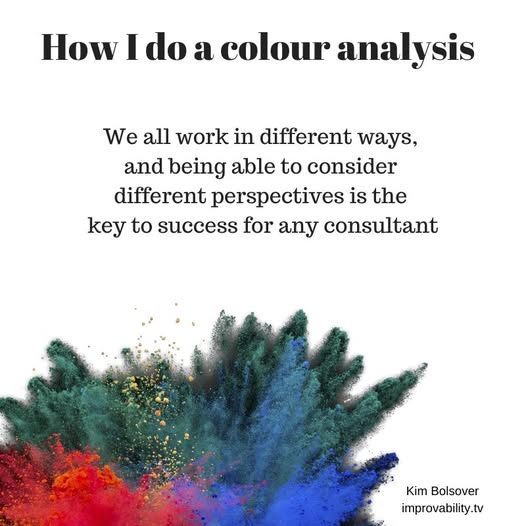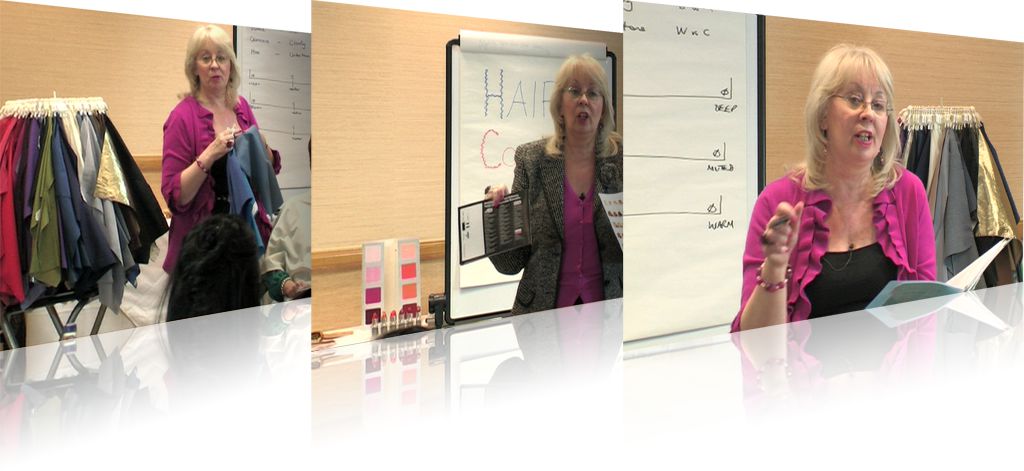This was written in reply to Brunhilde, a consultant who had already trained in colour elsewhere, and was now studying my Colour Your Client Online course so that she could work with clients in every corner of the planet.
She sent me photos of her colour client and asked for my opinion.
As requested, Brunhilde also provided loads of detailed notes about how she had arrived at her conclusions, and these included:
- skin tone
- undertone
- eye colour
- hair colour
- contrast between hair and skin colour
- lack of light in the photos supplied by the client
- how sunlight had altered the colours in the photos
- client’s natural hair colour
- one client had a sun tan
- comparisons between Soft and Bright, Cool and Warm, Deep and Light, from using the drapes
Loads here to get my teeth into!
Before doing any analysis, (and this one remains confidential between myself and Brunhilde, of course), I started out by explaining how I personally diagnose colour.
Dear Brunhilde,
Let me start by detailing how I do a colour analysis.
Also, as discussed previously, I must remind you that I can only make observations based on the colours I am seeing on my device, which may be totally different from the ones you see on yours. We are, unfortunately, all at the mercy of the limitations of technology.
Some of how I work may be completely different from how you work.
There are no rights or wrongs.
This is simply my preferred way of working, and is what I teach.

I don’t use skin tone at all in my analysis
a) It’s far too arbitrary. What one person refers to as fair, another will call porcelain. What one person refers to as golden, another will call olive
b) It’s a minefield of potential misuse, so I devised a simple system that doesn’t need skin tone/colour at all
I never cover up my client’s hair
a) Unless you’re able to change your client’s hair colour while she’s with you, she still has to leave with the hair colour she arrived in…
b) I must help my client look and feel fabulous exactly as she is right now, so that she can leave wearing colours that suit her and work with the hair colour she is currently wearing
c) I will obviously talk to her about a possible change of hair colour, and if she goes for that, I would invite her back when she’s made that change, to discuss next steps
I use hair colour and eye colour only
We identify the dominant tonal characteristic.
Iif we need it, we identify the secondary tonal characteristic which automatically tells you which season the client is.
Then I’ll add other factors as they come to the fore, like colour personality, body shape, style personality.
By the way, everything I’ve explained applies to both offline and online clients.
A full explanation of my simple system using hair and eye colour only begins on Page 13 in the Colour Analysis Training Manual – where I’ve provided super simple tables for you to follow. Easy-peasy, lemon-squeezy!
It’s worked for me for 25+ years.
It works consistently for thousands of consultants across the globe.
I encourage you to at least try it.
Why?
- Because the point of a colour consultation is NOT to spend the entire session draping and analysing…
- The point of a colour consultation is to diagnose and come up with suggestions as quickly as possible for HOW your client can start to look and feel absolutely fabulous
- Then you should spend the majority of the session discussing how she can USE the results of your diagnosis
I thought this explanation might help, as we all work in different ways, and being able to consider different perspectives is the key to succes for any consultant.
I am still learning after 40+ years in this fabulous business.
I hope you are too.
